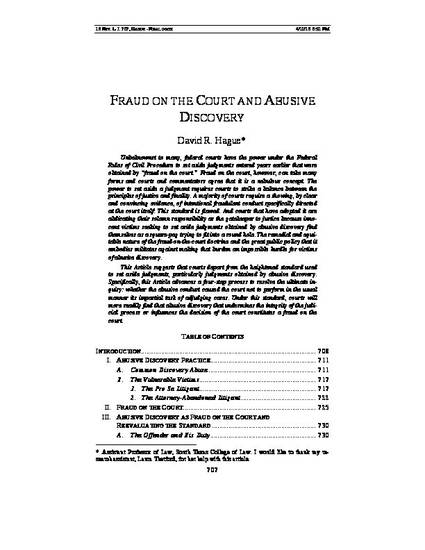
Unbeknownst to many, federal courts have the power under the Federal Rules of Civil Procedure to set aside judgments entered years earlier that were obtained by “fraud on the court.” Fraud on the court, however, can take many forms and courts and commentators agree that it is a nebulous concept. The power to set aside a judgment requires courts to strike a balance between the principles of justice and finality. A majority of courts require a showing, by clear and convincing evidence, of intentional fraudulent conduct specifically directed at the court itself. This standard is flawed. And courts that have adopted it are abdicating their solemn responsibility as the gatekeeper to justice because innocent victims seeking to set aside judgments obtained by abusive discovery find themselves as a square-peg trying to fit into a round hole. The remedial and equitable nature of the fraud-on-the-court doctrine and the great public policy that it embodies militates against making that burden an impossible hurdle for victims of abusive discovery.
This Article suggests that courts depart from the heightened standard used to set aside judgments, particularly judgments obtained by abusive discovery. Specifically, this Article advances a four-step process to resolve the ultimate inquiry: whether the abusive conduct caused the court not to perform in the usual manner its impartial task of adjudging cases. Under this standard, courts will more readily find that abusive discovery that undermines the integrity of the judicial process or influences the decision of the court constitutes a fraud on the court.
